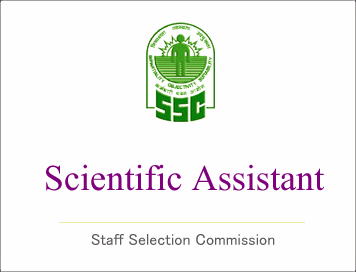Model Questions for Scientific Assistant (IMD) Exam (Paper-1) - Set 2

Model Questions for Scientific Assistant (IMD) Exam (Paper-1) - Set 2
Write and Discuss Your Answer with Q.No in Comment Box at the Bottom of Post.
Q- 1. What did the term niyoga, with reference to women, stand for in the vedic society ?
(A) Symbolic self-immolation of a widow at the death of her husband.
(B) Cohabitation of a childless widow with her husband’s brother until the birth
of a son.
(C) The vow of celibacy taken by a women of upper class.
(D) The performance of vedic sacrifices by a women independently.
Q- 2. Which one of the following vedic texts gives a detailed description of the Upanayna Samskara ?
(A) Atharva veda
(B) Chandyoga Upanishad
(C) Satapatha Brahmana
(D) Tandyamaha Brahamana
Q- 3. Which of the following text contains the famous Gayatri Mantra, addressed to the solar deity Savitri ?
(A) Brihadaranyaka Upanishad
(B) Rig Veda Samhita
(C) Atharva Veda Samhita
(D) Yajur Veda Samhita
Q-4. Which of the following was not a feature of the later vedic society ?
(A) A monetary economy
(B) Taxes were collected in kind
(C) Increase in sacrifices and rituals
(D) Kinship-based
Q- 5. Which of the following route was the stop-over of the Indo-European or Aryans before enetering India ?
(A) Bacteria and the Northern Iranian plateau
(B) Central Europe
(C) Makran
(D) None of the above
(EBOOK) SSC Scientific Assistant (IMD) Exam Papers PDF Download
Study Kit for SSC Scientific Assistant (IMD) EXAM
Q- 6. Which of the following statements about the system of taxation and revenue administration in the Later Vedic period is not correct ?
1. Settled life and stable agriculture led to the production of surplus which
could be collected by the king in form of taxes.
2. An official called Sangrahtri collected the royal share of the produce.
3. The king received regular contributions from the people in the form of bali
and shulka.
4. One-sixth of the produces of the land was payable to the king.
(A) 1 and 3
(B) 2 and 4
(C) 3 and 4
(D) All of the above.
Q- 7. Match the List I with List II and select the code given below.
List-I List-II
A. Kalpa
1. Etymology
B. Siksha 2.
Phonetics
C. Nirukta 3. Ritual
D. Chhanda 4. Metre
Codes:
A B C D
(A) 3 2 1 4
(B) 3 2 4 1
(C) 2 3 4 1
(D) 2 3 1 4
Q-8. Mahayanist sutra, offering a discourse delivered By Buddha to Buddhiattavasis best known work and is the most popular in China and Japan. It is named as
(A) Saddharma Pundarika
(B) Prajana-Paramita
(C) Lalitavisara
(D) Sarvartivadins
Q- 9. Ugraditya wrote treatise in sanskrit containing 8,000 shlokas known as Kalyan Karak. It deals with
(A) Philosophy of Jainism
(B) Emphasises the principle of non-violence
(C) Medicines to be taken by Jains.
(D) The way to Kailvalya.
Q-10. Vagbhatalankara (12th century A. D.) is a popular Jain work which in the first commentary on sanskrit poetics. The 260 verses are in anushtubh metre. The work has been composed by
(A) Srigaea
(B) Vaghbhata
(C) Natyadarpan
(D) Hemchandra


